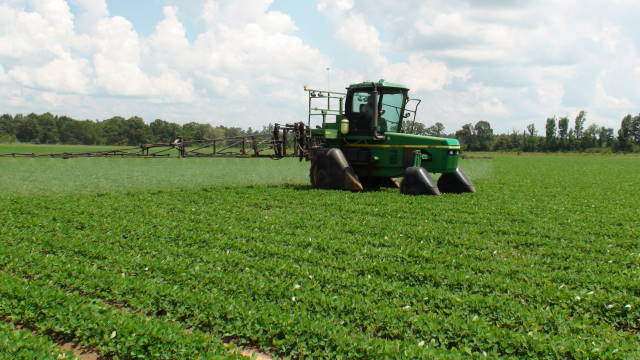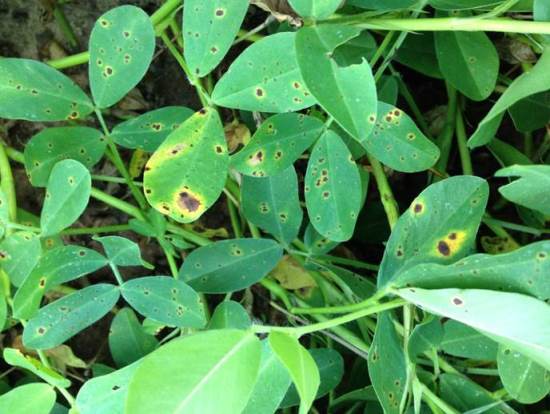
The European Union has significantly reduced tolerance levels of propiconazole residue in imported peanuts. Photo credit: John Atkins
Michael J. Mulvaney, Nick Dufault, Bob Kemerait
Peanut growers take note, there are new import restrictions on propiconazole residues in peanuts going to the European Union (EU). Propiconazole is an active ingredient in the common peanut fungicides Tilt, Tilt/Bravo, Artisan, Stratego, PropiMax, and Bumper.
The restrictions apply only to shipments that may be destined for the European Union. If there is any possibility that peanut may go to a buying point, the peanut industry recommends that no propiconazole be used in 2016. The restrictions do not apply for domestic use, such as green peanuts for boiling.
The import restrictions are not due to any new risk from propiconazole use, but rather are due to EU questions about the methodology to determine maximum residue limits. In light of those questions, the EU has reduced the import tolerance detection limit to a concentration of 0.01 ppm, compared to the US maximum residue limit of 0.2 ppm. That means that if they can detect propiconazole in peanut shipped to the EU, the shipment will be rejected.
Propiconazole has been primarily used for leaf spot control in peanuts. Planting prior to May 10 can reduce risk of leaf spot pressure, but will also increase risk of TSWV and white mold pressure. Some suggested propiconazole alternatives for 2016 spray programs include:
- Tank mix Alto 100 SL (5.5 fl oz/A) with Bravo Weatherstik (1 pt/A)
- Chlorothalonil (1 pt/A) and Eminent (7.2 fl oz/A)
- Chlorothalonil (1 pt/A) and Topsin-M (5-10 fl oz/A). Note: a tank-mix of chlorothalonil + Topsin-M should not be used more than twice per season.
- Chlorothalonil (1 pt/A) and Topguard (7-14 fl oz/A)
- Priaxor (6 fl oz/A)
- Fontelis (12-24 fl oz/A to a maximum of 72 fl oz/A/season), also for soil borne diseases
- Elatus (7.3-9.5 fl oz/A to a maximum of 21.9 fl oz/A/season), also for soil borne diseases
- Provost (7-8 fl oz/A), also for soil borne diseases
For more information, contact your local Extension Agent, Extension Specialist, crop consultant, buying point, and/or chemical representative.
- Four Early-Season Lessons from 2020 Peanut Production - April 9, 2021
- Sprayer Calibration Tables – Calibration Made Easy - October 30, 2020
- Stand Issues – Should You Replant Your Peanut Field? - May 15, 2020

